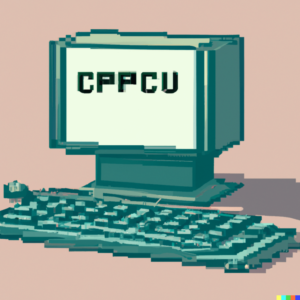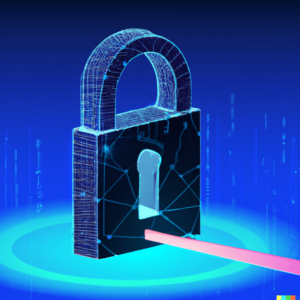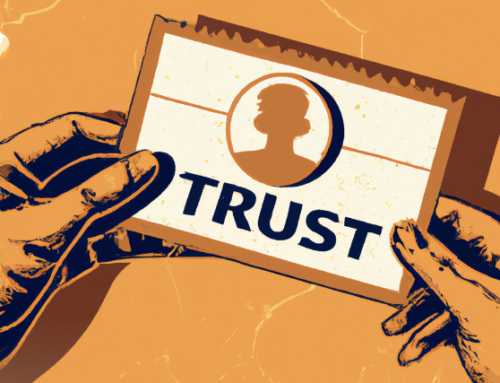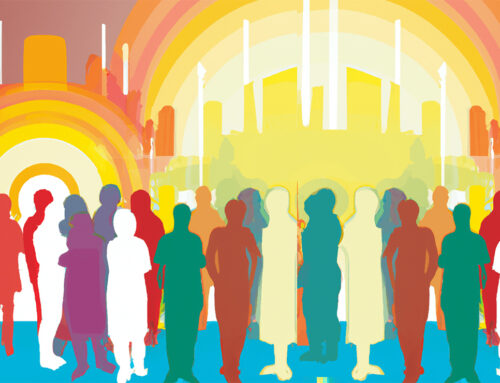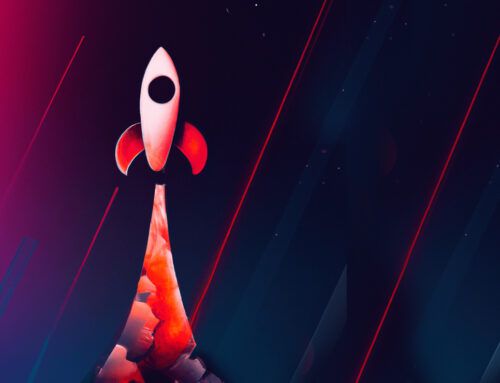Exploring the history of the internet is important to understand the progress and capabilities of this technology and illustrates potential paths forward as Web 3.0 and beyond are developed. The internet was invented in the late 1960s as a form of military communication known as ARPANET.
When it was first introduced to the public in the 1990s, it was undoubtedly a groundbreaking new technology that promised to change the way we live, work, and interact with each other.
The Beginnings of the Internet: Web 1.0
The public was initially reluctant to adopt the internet primarily because it was not yet widely available, as it was mainly being utilized by universities and large corporations. As the infrastructure improved and capabilities advanced, more people gained access to the internet and its popularity grew
quickly.
The introduction of the internet was met with excitement and promise. Web 1.0 provided a glimpse into the potential of this new technology, even though it was relatively limited in its capabilities. The public’s reception to the internet was generally positive, and it was clear that this new technology would change
the way we live and interact with each other.
The emergence of Web 2.0 would further expand on this promise, leading to the rise of social media, e-commerce, and the mobile internet. But the story doesn’t end there, as Web 3.0 promises to take social media and more to a whole new level, with decentralization, user control, ownership of data, and new and innovative web experiences.
Web 1.0 was the first iteration of the internet, and it primarily focused on static web pages that provided information to users. This early version of the web was typically a one-way street, meaning there was no active dynamic between the content creators and users. Websites were relatively simple, and there was no
user-generated content or interactivity.
The reception to Web 1.0 was generally positive, as it provided a new way for people to access information and learn about new topics. However, because there was no way for users to interact with the content or with other internet users, it was relatively limited in its capabilities. At the time, the idea of a
global network of interconnected computers was revolutionary and it was difficult to convince people that it would be a utility for the future.
One of the biggest challenges that advocates of the internet faced was convincing people that it was more than just a passing fad. Many people were skeptical of the idea of the internet as a utility, viewing it as a tool for academics and researchers rather than a tool for everyday life. However, as more and more businesses
began to establish an online presence, it became clear that the internet had enormous potential for commercial use.
Websites like Amazon and eBay demonstrated the power of e-commerce, allowing for people to purchase and sell goods online from anywhere in the world. In addition to e-commerce, the internet also became an important tool for communication and information sharing. Websites like Yahoo! provided a way for people to search for information on the web, while online forums and chat rooms allowed people to connect with others who shared
their interests. The momentum of the public’s interest in the internet as a utility led to the emergence of Web 2.0, which focused on user-generated content,
social networking, and interactive web experiences.
Web 2.0: The Rise of Social Media and User-Generated Content
Web 2.0 was the second generation of the World Wide Web, which emerged in the early 2000s. It represented a shift from the static, one-way communication of Web 1.0 to a more interactive and collaborative web experience. However, getting people on board with the idea of user-generated content and online communities was not without its challenges, similar to Web 1.0.
During the Web 2.0 era, websites became more dynamic and allowed users to interact with content in a variety of ways. Social networking sites like Facebook and MySpace allowed people to connect with each other online and share their thoughts, ideas, and interests. Video sharing sites like YouTube provided a platform for people to create and share their own videos, while sites like Wikipedia allowed people to collaboratively create and edit content.
One of the biggest challenges faced by advocates of Web 2.0 was convincing people that user-generated content was valuable and worth their time. Many people were skeptical of the idea of sharing personal information and opinions online, viewing it as a potential threat to their privacy and security.
However, as more and more people began to participate in online communities, it became clear that user-generated content had enormous value. The internet evolved to become a platform for people to connect with others who shared their interests, and to find information and resources that were not available in traditional media.
In addition to the social benefits of Web 2.0, it also had significant commercial implications. Websites like Amazon and eBay continued to dominate e-commerce, but they were joined by new players like Etsy and Airbnb, which allowed people to buy and sell goods and services in new and innovative
ways.
While it was not without its challenges, the era of Web 2.0 represented a major shift in the way that people used the internet. It laid the groundwork for the more decentralized and secure Web 3.0 that we see emerging today, and it demonstrated the enormous potential of user-generated content and online communities.
The Promise of Web 3.0: From Interaction to Ownership
Web 3.0 is the third generation of the World Wide Web, which is still in its early stages of development. Also known as the decentralized web, Web 3.0 represents a significant departure from the previous generations of the web. It promises to offer a more secure, transparent, and user-centric web experience, but it also presents some challenges to its widespread adoption.
One of the key features of Web 3.0 is its focus on decentralization. Unlike the previous generations of the web, which were built around centralized platforms and services, Web 3.0 aims to create a more distributed and decentralized web infrastructure. This will be achieved through the use of blockchain technology, which allows for secure and transparent transactions without the need for intermediaries.
Another important feature of Web 3.0 is its emphasis on user control and ownership of data. With the decentralized web, users will have greater control over their personal data and will be able to decide how and when to share it. This will provide a more secure and private web experience, while also giving users more
control over their online identity.
Web 3.0 also promises to offer new and innovative ways of interacting with the web. Virtual and augmented reality technologies will allow for more immersive and interactive web experiences, while artificial intelligence and machine learning will provide more personalized and relevant content.
However, there are some challenges to the widespread adoption of Web 3.0. One of the main challenges is the need for new infrastructure and standards to support decentralized web technologies. There is also a need for greater user education and awareness about the benefits of the decentralized web, and how to use it safely and effectively.
Despite these challenges, the potential benefits of Web 3.0 are significant. It promises to provide a more secure, transparent, and user-centric web experience, while also fostering innovation and new economic opportunities. As the evolution of the internet continues to evolve and mature, we can expect to see new
and exciting developments in the way we use the web.
The Future of the Internet is Evolving: Where Will We Go Next?
Web 3.0 is a paradigm shift in how we use and view the internet. With the rise of blockchain technology, Web 3.0 aims to decentralize the internet and give power back to the people. In this new evolution of the internet—the decentralized web—users have control over their data and can interact with others in a more secure and transparent environment.
One of the key benefits of Web 3.0 is its ability to create new economic opportunities through the use of cryptocurrencies and decentralized applications (dApps). Decentralized finance (DeFi) is one of the foundational use cases for Web 3.0. With DeFi, financial transactions can be conducted without the need for
intermediaries such as banks, making it more accessible and affordable for everyone. Other use cases have yet to be developed and deployed, but the technology has the capacity to transform marketing, healthcare, and many other industries beyond finance.
Another exciting application of Web 3.0 is in the field of virtual and augmented reality (VR/AR). With the decentralized web, VR/AR experiences can be created without the need for centralized servers or platforms. This opens up new possibilities for immersive and interactive web experiences that can be enjoyed by
anyone with an internet connection.
Web 3.0 also promises to bring greater transparency and accountability to online interactions. Through the use of smart contracts, agreements between parties can be automatically enforced without the need for intermediaries. This can be particularly useful in areas such as supply chain management, where goods
and products can be tracked in real-time.
As Web 3.0 continues to evolve, we can expect to see new and innovative use cases emerge. The potential for Web 3.0 to disrupt traditional industries and create new economic opportunities is vast. From decentralized social networks to new forms of governance and decision-making, the possibilities are endless.

